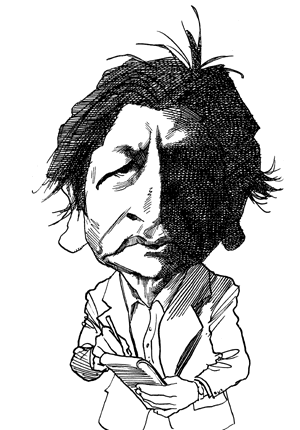In later life the English writer W. Somerset Maugham developed an interest in Indian spirituality. He visited India in 1938, and in Madras was taken to an ashram to meet a man who, born Venkataraman, had retreated to a life of silence, self-mortification, and prayer, and was now known simply as the Maharshi.
While waiting for his audience, Maugham fainted, perhaps because of the heat. When he came to, he found he could not speak (it must be mentioned that Maugham was a lifelong stammerer). The Maharshi comforted him by pronouncing that “silence also is conversation.”
News of the fainting fit, according to Maugham, soon spread across India: through the power of the Maharshi, it was said, the pilgrim had been translated into the realm of the infinite. Though Maugham had no recollection of visiting the infinite, the event left its mark on him: he describes it in A Writer’s Notebook (1949) and again in Points of View (1958); he also works it into The Razor’s Edge (1944), the novel that made his name in the United States.
The Razor’s Edge tells the story of an American who, having prepared himself by acquiring a deep tan and donning Indian garb, visits the guru Shri Ganesha and at his hands has an ecstatic spiritual experience, “an experience of the same order as the mystics have had all over the world through all the centuries.” With Shri Ganesha’s blessing, this proto-hippie returns to Illinois, where he plans to practice “calmness, forbearance, compassion, selflessness and continence” while driving a taxi. “It’s a mistake to think that those holy men of India lead useless lives,” he says. “They are a shining light in the darkness.”
This Issue
November 1, 2001






